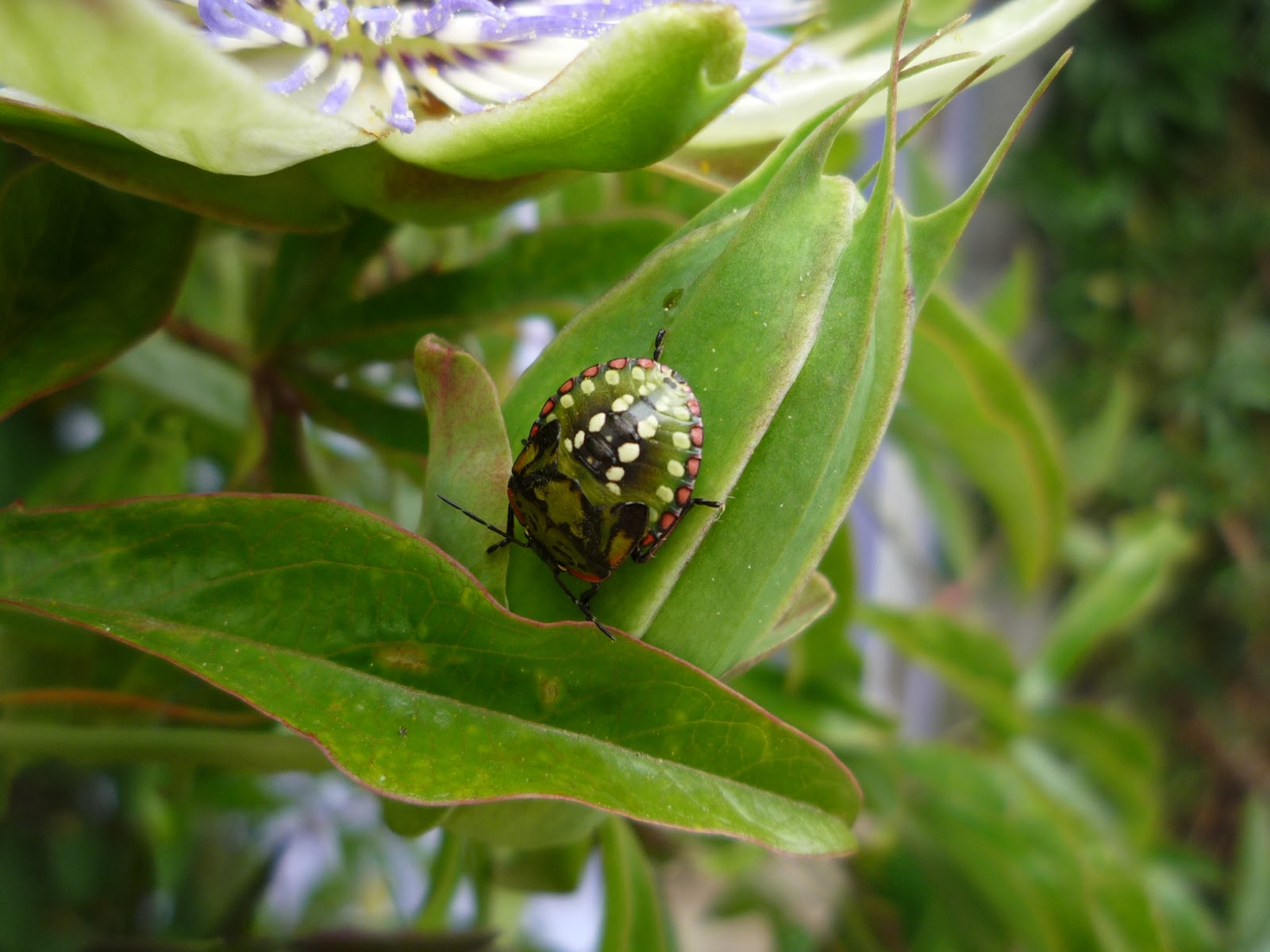There are so many fascinating insects living in a garden and they need both places to overwinter and somewhere to lay eggs in warmer months.

Many gardeners are fastidious in clearing away rotted wood, fallen branches, piles of leaves and herbaceous stems. This debris however, offers sought-after accommodation to a whole raft of arthropods, many of whom have kept the garden pest-free, as well as pollinating fruits and vegetables.
In order to compromise therefore, it is necessary to offer alternative accommodation. This is however not the whole story. Continued use of pesticides has severely depleted insect populations, so if you can offer a haven for them within you own garden, then you are also doing your bit to preserve the biodiversity and counteract the harm being done elsewhere
The following blog post offers two of our more simple designs, whereas the following article will share some of our more elaborate insect homes. These are all made from repurposed materials, untreated pallet wood, fruit crate wood and general garden debris. To decorate them, we use natural earth and mineral pigments, made, as the name suggests, from clays and semi-precious stones. Our article using natural pigments should help you, if you have never used them before.
The Gîte
This is one of the simplest form of solitary bee and lacewing houses, two types of insect who offer so much to the gardener. There are over 200 species of the former, one such, the Harebell bee is so small it can fit inside a wheat-straw stalk and often uses a disused woodworm burrow. When the bees find the accommodation to their liking they will stay throughout the year, using the hole as a nursery, making it the basis of an expanding colony for the garden. This is of great advantage, as it is the solitary bee, which does most of the task of pollinating our food crops. The recommended diameter of burrow to attract these bees is from 2-10 mm. You can achieve this by simply collecting suitable sized hollow stalks or you can do as we did above and drill out some of your old prunings, in our case; buddleia. The lacewing, a delicate and beautiful creature is a wonderful gardener's helper, with many of the species having a voracious appetite for aphids. This sort of accommodation can be sited anywhere you find a suitable opening but in order to attract the insects initially it is a good idea to site it where there are melliferous flowers
The Chalet
This is a nice little project and where you can use natural pigments to create some really harmonious designs as well as useful insect accommodation. They also make great gifts and can be either suspended or attached directly to walls or fences.


The chalets are made from pallet wood blocks with a piece of pallet wood planking for the backing board. They also have roof shingles cut from fruit crate wood. The roof shingles can be attached either with 15mm panel pins or, if you have it, a mechanical or electric stapler. The most difficult part is drilling the pallet wood block. I used 6 and 10mm drill bit.
If you are thinking of this as a project for a child, it could be given in kit form, even as a gift, for self-assembly and the opportunity to get creative in personal choice of decoration. From experience it is better to varnish or oil each individual element before the final assembly. You can have great fun mixing and matching the pigments and apart from being great gifts, these insect homes can make useful little items for a fund raising event or, who knows, the start of a whole new career!

Truly the gift that keeps on giving, when we were wrapping up one of these as a birthday present, we noticed that one of the chambers was already occupied! It also makes a fascinating study to just sit and watch who comes to check out the accommodation. On the right, you can see that two holes have already been sealed. If you have leaf cutter bees, then they make for compulsive viewing.
Here is our detailed film on how to make the chalet:
A following post will share two more designs for insect hotels, again made from repurposed freely available materials, so until then, thanks for dropping by!Please feel free to share this article, comment and/or ask for further information.
All the best, Andy
© Andy Colley 2014
RELATED ARTICLES
Home-made Insect Hotel from Repurposed Materials
The Bee Cosy for cosy bees is an elegant green gift for you to make using 99% recuperated materials...read more

Fun to make and fascinating to watch, these insect hotels can make all
the difference to the successful pollination of your fruit and
vegetable...read more
Home-made Repurposed Wood, Luxury Insect Hotel

An Insect Hotel as a Utility Box Cover - Design & Construction
The electricity company brought power to the property but sited the
ubiquitous supply box right in front of the house. Not surprisingly, she
is unhappy...read more



































